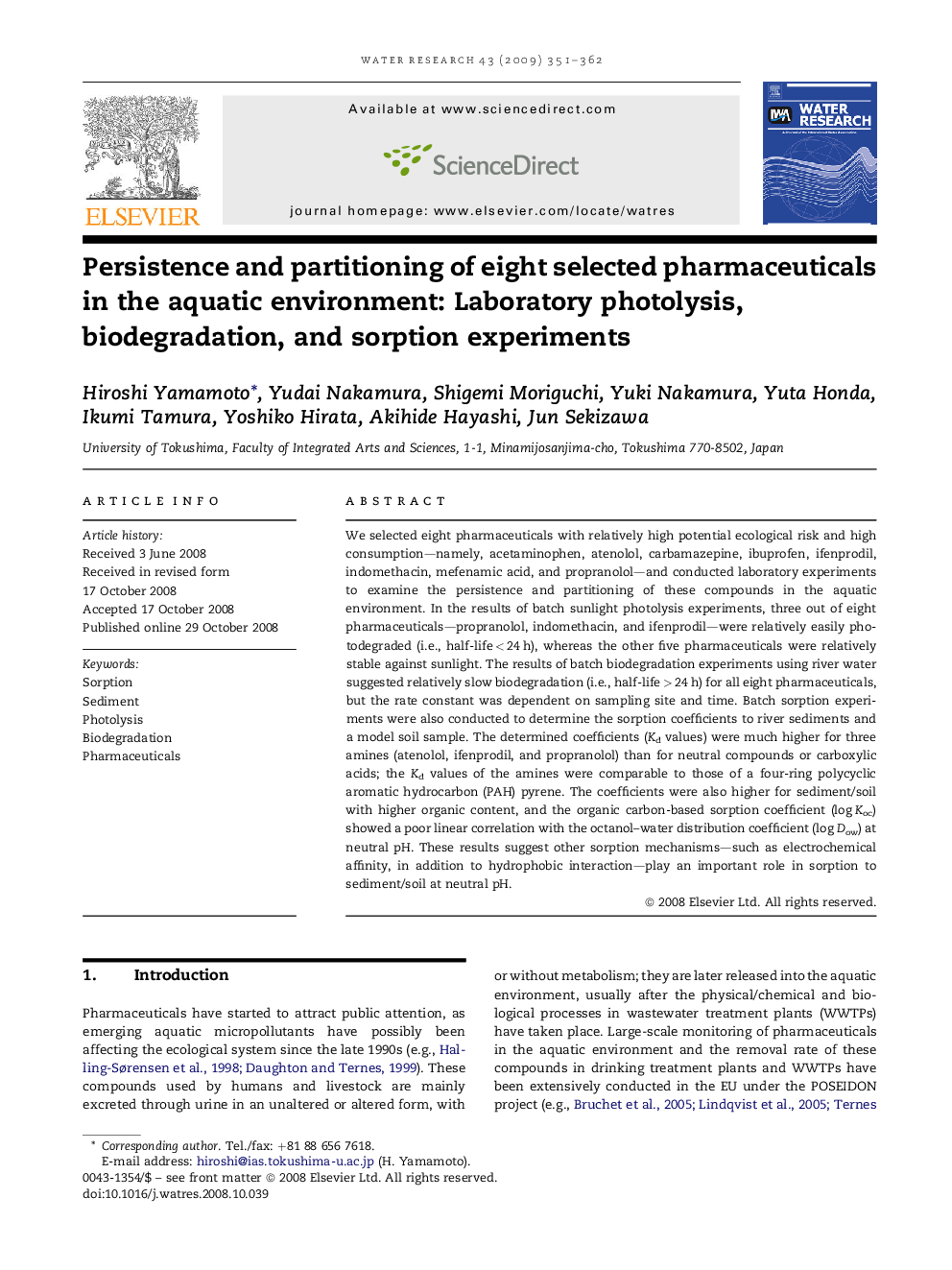| Article ID | Journal | Published Year | Pages | File Type |
|---|---|---|---|---|
| 4484435 | Water Research | 2009 | 12 Pages |
We selected eight pharmaceuticals with relatively high potential ecological risk and high consumption—namely, acetaminophen, atenolol, carbamazepine, ibuprofen, ifenprodil, indomethacin, mefenamic acid, and propranolol—and conducted laboratory experiments to examine the persistence and partitioning of these compounds in the aquatic environment. In the results of batch sunlight photolysis experiments, three out of eight pharmaceuticals—propranolol, indomethacin, and ifenprodil—were relatively easily photodegraded (i.e., half-life < 24 h), whereas the other five pharmaceuticals were relatively stable against sunlight. The results of batch biodegradation experiments using river water suggested relatively slow biodegradation (i.e., half-life > 24 h) for all eight pharmaceuticals, but the rate constant was dependent on sampling site and time. Batch sorption experiments were also conducted to determine the sorption coefficients to river sediments and a model soil sample. The determined coefficients (Kd values) were much higher for three amines (atenolol, ifenprodil, and propranolol) than for neutral compounds or carboxylic acids; the Kd values of the amines were comparable to those of a four-ring polycyclic aromatic hydrocarbon (PAH) pyrene. The coefficients were also higher for sediment/soil with higher organic content, and the organic carbon-based sorption coefficient (log Koc) showed a poor linear correlation with the octanol–water distribution coefficient (log Dow) at neutral pH. These results suggest other sorption mechanisms—such as electrochemical affinity, in addition to hydrophobic interaction—play an important role in sorption to sediment/soil at neutral pH.
